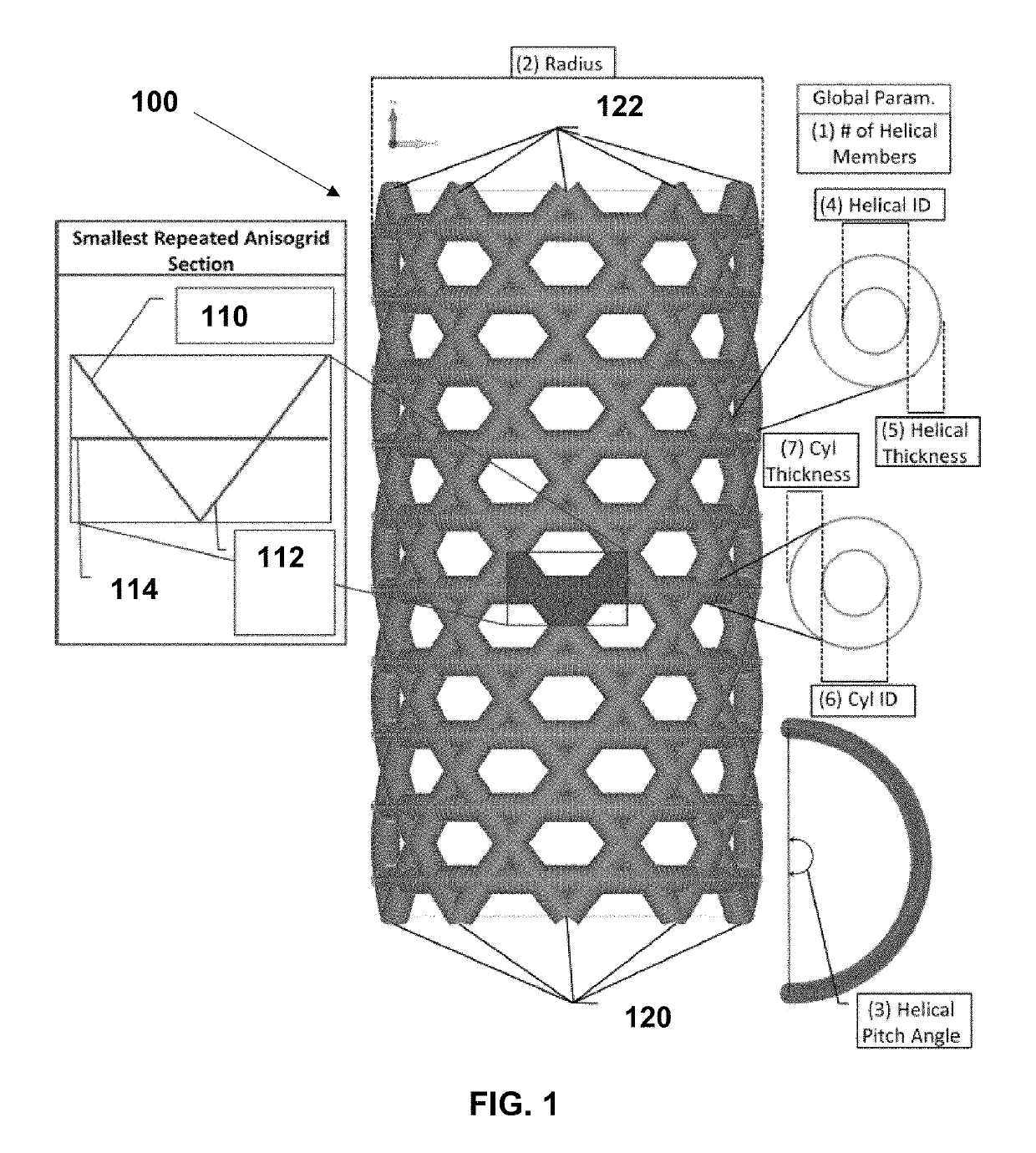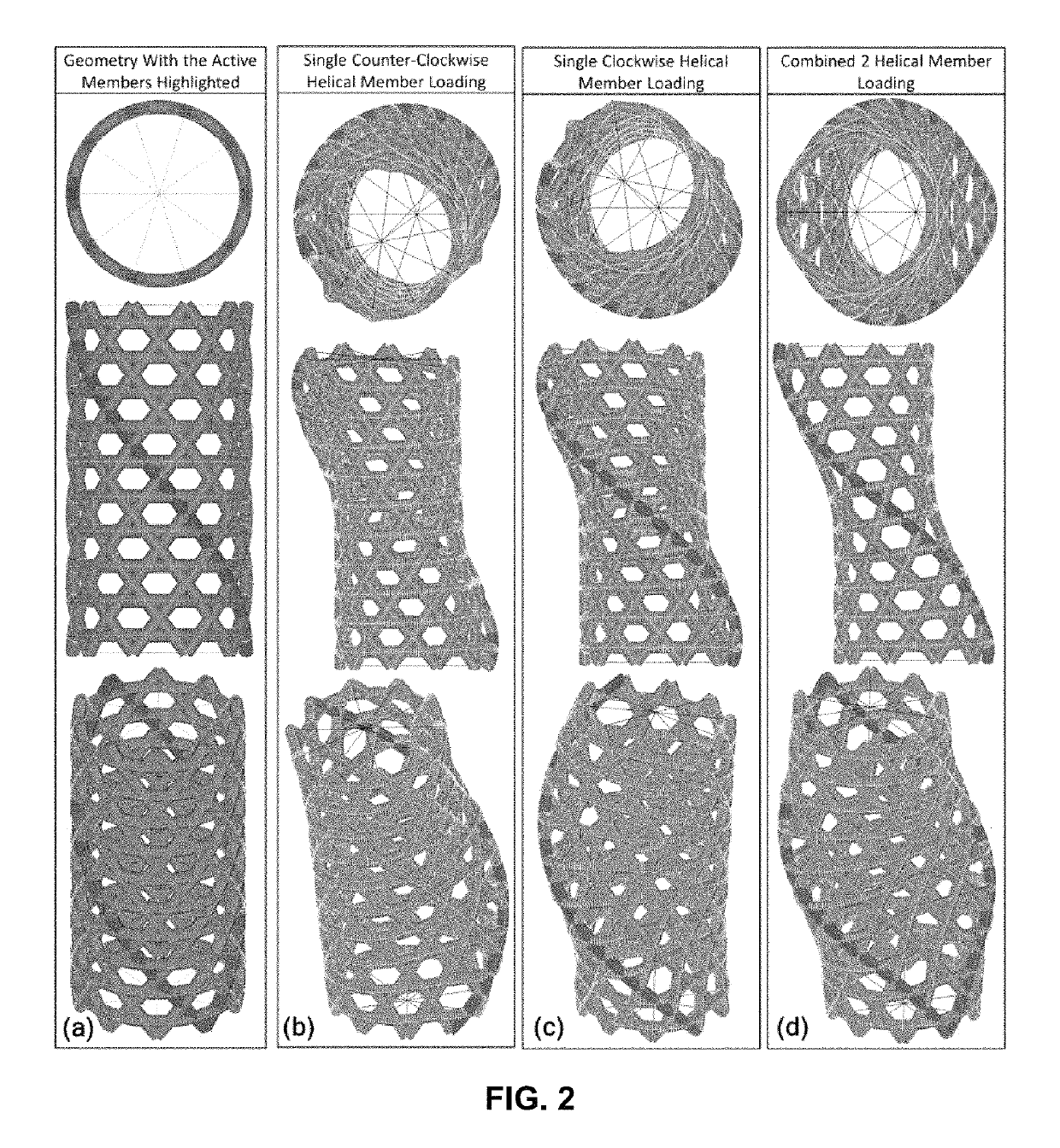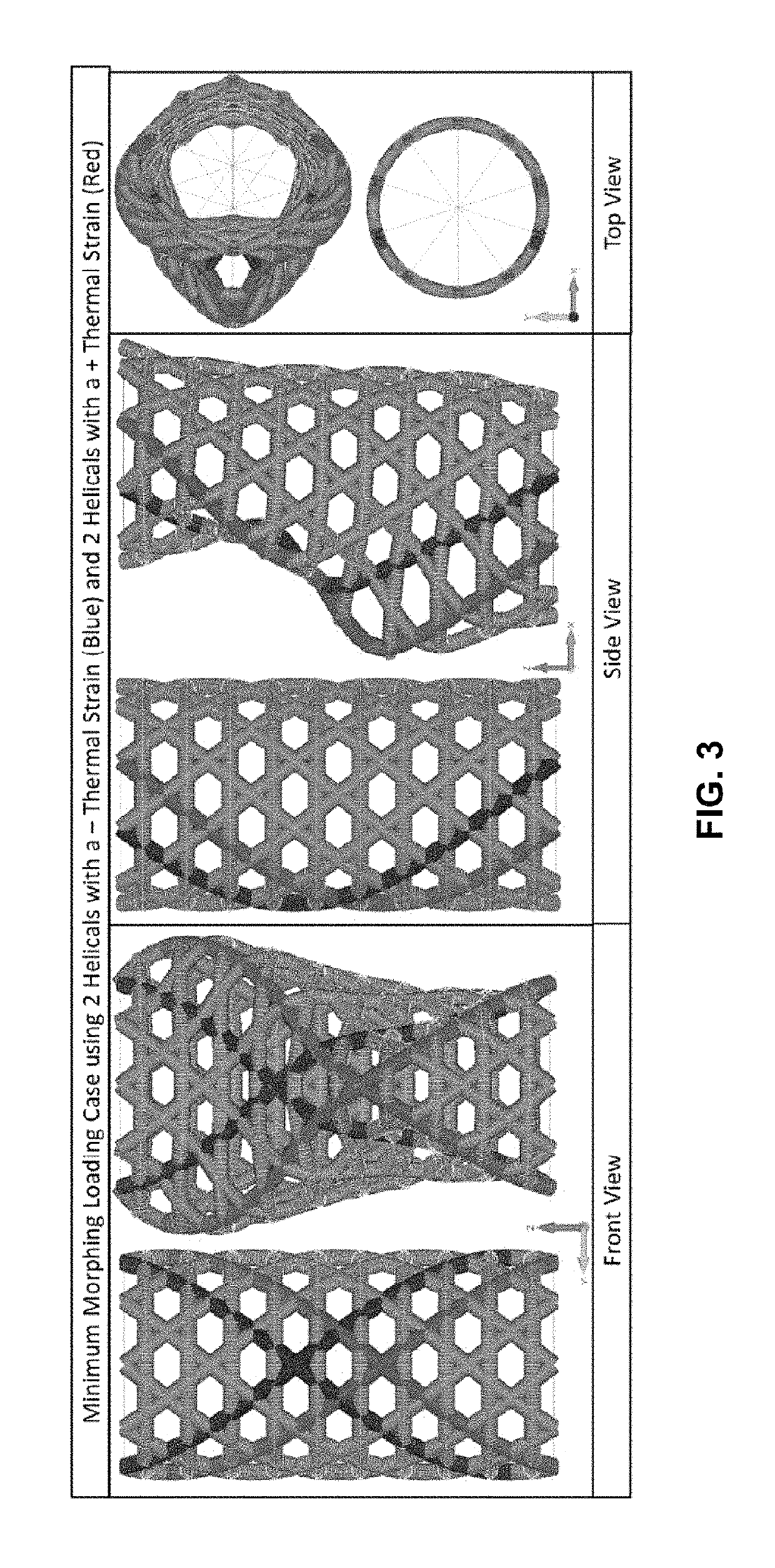Thermal morphing anisogrid structure
a technology of anisogrid and morphing, which is applied in the direction of mountings, optics, instruments, etc., can solve the problems of increasing the cost of the system, requiring the rigid primary structure to be very heavy, and difficult to replicate the system in orbit to create a large coherent mirror, etc., to achieve significant mass savings, cost savings, and reduce the output of the given inpu
- Summary
- Abstract
- Description
- Claims
- Application Information
AI Technical Summary
Benefits of technology
Problems solved by technology
Method used
Image
Examples
Embodiment Construction
[0028]Exemplary thermal morphing anisogrids, illustrated in FIG. 1, may replace conventional structural paradigms, which consist of a heavy and rigid primary structure coupled with a secondary morphing system by using smart adaptive primary structure. This is achieved by integrating the adaptive capability directly into the primary structure. The adaptive structural concept achieves design requirements by predicting and adapting to thermal and structural loading environments in real time. This adaptive capability is achieved through the use of thermal strain as the active actuation mechanism to control the lengths of helical members in the anisogrid structure. To morph to the desired position, thermal energy is applied to the helical members in the system to generate axial expansion due to local and global thermal strains, which pushes and pulls the system into the desired configuration. The application of thermal loads can be seen in FIGS. 2-4. While thermal strains have been propo...
PUM
 Login to View More
Login to View More Abstract
Description
Claims
Application Information
 Login to View More
Login to View More - R&D
- Intellectual Property
- Life Sciences
- Materials
- Tech Scout
- Unparalleled Data Quality
- Higher Quality Content
- 60% Fewer Hallucinations
Browse by: Latest US Patents, China's latest patents, Technical Efficacy Thesaurus, Application Domain, Technology Topic, Popular Technical Reports.
© 2025 PatSnap. All rights reserved.Legal|Privacy policy|Modern Slavery Act Transparency Statement|Sitemap|About US| Contact US: help@patsnap.com



